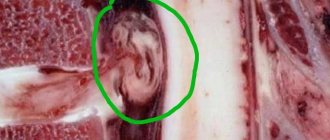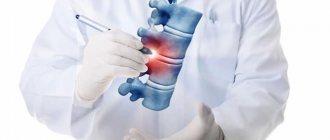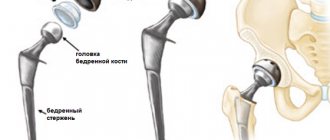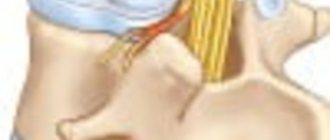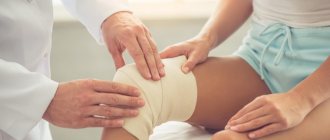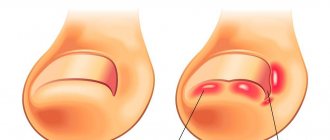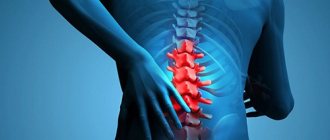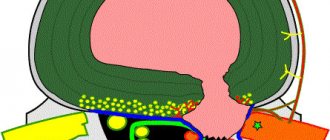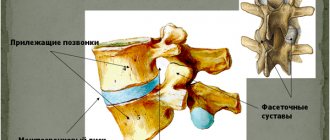Intervertebral hernia can occur in the thoracic, cervical and lumbar regions. Localization is determined by the presence of load on a certain area and its mobility. Surgery is a radical method of treatment, but restoration of health does not stop there. This is followed by the rehabilitation stage, which is decisive in the treatment of spinal hernia. This period can take a month or a year, depending on the type of operation performed, the characteristics of the body and the patient’s compliance with all doctor’s instructions.
Basis of postoperative rehabilitation
Proper recovery consists of several important points:
- Comprehensive supervision of specialized specialists - surgeon, neurologist, rehabilitation specialist and others, if necessary.
- A well-designed recovery action plan taking into account all the patient’s characteristics.
- Using measures to prevent relapse, changing lifestyle and eliminating precipitating factors.
The patient feels relief after removal of the hernia, there is no more pain and one can gradually return to normal life. However, if the recommendations are not fully implemented, the situation may return and worsen. Recovery can be effective only with proper organization of the recovery period and full compliance with the instructions.
The rehabilitation center of the clinic deals with the recovery of patients after surgery to remove a herniated disc.
Features of rehabilitation and physical therapy in the late period
In the late rehabilitation period, the patient, under the supervision of a doctor, begins to work on muscle restoration. At the same time, he can count on a significant increase in the intensity of physical activity. These same factors help strengthen muscles and further enhance a person’s lifestyle.
And for physical education to bring maximum benefit, such a person needs:
- do not lift things heavier than 9 kg;
- do not jump or stand for a long time;
- try to prevent hypothermia (to do this you need to wear a scarf or a special belt on the lower back);
- The corset will no longer be needed at this time (moreover, it can be harmful because it can cause atrophy).
Duration of postoperative rehabilitation after removal of a herniated disc
The period is determined by several important factors:
- The type of operation performed. For example, after a discectomy, the system will take at least six months to recover.
- If the intervention was minimally invasive, the recovery period is greatly reduced and can be less than a month. The risk of complications with this approach is also minimal.
- The patient's age, weight and general health are also determining factors for recovery time.
- The age of the hernia, the time during which it appeared and the difficulties encountered in its treatment also play an important role.
Rehabilitation specialists have at their disposal a number of techniques that allow patients to recover as quickly as possible and without risks.
Drug therapy
For a patient who has had a herniated disc, the doctor may prescribe certain medications. Most often treatment is carried out:
- chondoprotective drugs for tissue restoration;
- anti-inflammatory non-steroidal medications to relieve swelling and inflammation;
- analgesics to reduce and subsequently completely eliminate pain;
- muscle relaxants, which relieve muscle tension.
Adaptation period after surgery
After the patient is discharged home, his adaptation begins. At home, it is necessary to follow a number of rules so that the process goes faster. The patient needs:
- Wear a corset that fixes the spine in the correct position and protects from injury.
- Avoid standing or sitting for long periods of time.
- Avoid sudden movements, strong turns, bends, and lifting heavy objects.
- It is not recommended to travel in public transport in the first months after surgery. If necessary, the patient should take a reclining position.
- Four weeks after discharge, physical therapy exercises can begin.
- Any exercises or loads must be agreed with your doctor.
Active rehabilitation can begin in 2-4 months.
Physiotherapy methods
As soon as the late period of rehabilitation begins, the patient is prescribed physiotherapeutic procedures. This method of treatment does not cause any pain in a person. The course usually consists of 15 sessions and is repeated every 6 months for prevention. It includes:
- electrical stimulation, due to which metabolic processes are normalized and dead cells in the affected area are regenerated;
- wraps and mud baths to saturate the skin with minerals and trace elements;
- Magnetherapy, which relieves pain and reduces inflammation;
- massage to stabilize blood flow;
- laser therapy to neutralize damage in the bone and cartilage parts of the operated area;
- ultrasound treatment to eliminate pain, increase tissue regeneration and normalize blood circulation
- phonophoresis, during which the necessary drugs are introduced into the body through ultrasound.
Diet
Nutrition has the most important effect in the restoration of the spine. Food must be properly selected for better absorption of all useful elements. What is important is the balance of fiber, gentle digestion without intestinal irritation. If problems arise with digestion and stool, this will inevitably cause unnecessary stress on the muscles. Calorie intake should also be controlled to prevent the patient from gaining excess weight. Extra pounds will put stress on the spine, which is already vulnerable in the postoperative period.
Light exercises
In the initial stages, it is recommended to do simple exercises. Daily exercise in the morning will help prepare weakened muscles for movement. During the procedure, the patient may experience minor pain and discomfort. If they become intense, you should consult your doctor. This may indicate that the load is excessive or postoperative complications have developed.
The following exercises are basic:
- Deflection. Performed while sitting on a chair. Bring your knees together, focus on your feet, your back is 2 palms wide away from the back of the chair. Perform the following actions: inhale deeply, arms extended forward - exhale - place your hands behind the back of your head - bend over - reach your shoulders to the back of the chair. Do 8-10 repetitions.
- Stretching. It is performed lying on the floor (you need to put a cushion under your lower back). Hands are raised and placed straight behind the head. When performing this manipulation, the spine is stretched, which relieves pain after surgery. Do 10 reps.
- Relaxation. It is performed lying on the floor, with a towel roll under your side. Lie on your side, straighten your arm, place it behind your neck without bending it. Due to the adduction and abduction of the arm, the muscles of the spinal column relax. Do 10 repetitions on the right and left sides.
Spine stretching.
These are the easiest exercises, so more complex complexes should be started when the patient does not experience discomfort during their implementation.
Consequences
The consequences of a compression fracture of the spine can be very serious. Their severity depends on the severity of the injury, the extent of damage to the spine, and the adequacy of the therapy performed. Complications after a spinal fracture can occur due to severe trauma, improper transportation of the victim, or the provision of unprofessional assistance to him. Therefore, if you suspect a spinal fracture, you must call an ambulance and not touch the victim (of course, if his situation is not life-threatening).
The consequences of a spinal fracture include:
- Instability of the vertebrae in the spinal column;
- Impaired conduction of nerve fibers as a result of compression of the nerve roots of the spine;
- Radiculitis;
- Rachiocampsis;
- Formation of kyphosis (hump);
- Constant back pain;
- Breathing disorders;
- Callus;
- Intervertebral hernia;
- Infection of the damaged area;
- Inflammation and suppuration;
- Paralysis of limbs.
Urological consequences of a spinal fracture include disruption of urination and the functioning of the urinary system. In some cases, patients experience erectile dysfunction.
When you need to see a doctor urgently
Even if the scheduled examination is still far away, it is necessary to immediately make an appointment with a doctor if:
- burning sensation in the area of the operation;
- urinary disorders;
- numbness in the legs, decreased muscle strength;
- abdominal pain;
- increased body temperature;
- negative changes in the condition of the postoperative wound, for example, the appearance of swelling.
Rehabilitation is no less important element of treatment than the operation itself. After all, the fine work of a spinal surgeon ensures only 50% of success, the second half of which depends entirely on how accurately the patient follows the recommendations received from the doctor. Therefore, it is extremely important not to neglect any component of rehabilitation, not to violate restrictions and to regularly attend preventive examinations to assess the quality of the recovery period. Such a scrupulous approach will ensure a high speed of rehabilitation and absolute restoration of the body. Then the effort and time spent on this will pay off handsomely and the intervertebral hernia, as well as the pain and other disorders associated with it, will remain a thing of the distant past.
Specifics of rehabilitation measures
The key to successful completion of rehabilitation is an integrated approach to restoring the patient’s health. Mandatory components of rehabilitation measures include:
- drug therapy. Taking medications is necessary to relieve pain attacks, ensure rapid healing of postoperative injuries and prevent the development of complications. The priority is anti-inflammatory drugs, drugs to normalize blood flow, vitamin complexes and chondroprotectors;
- physiotherapeutic procedures are a set of preventive treatment methods that prevent the development of adverse reactions. In addition, physical therapy sessions increase the overall effectiveness of rehabilitation. Among the most effective are laser therapy, electrophoresis, electrical stimulation of tissues, magnetic therapy, kinesitherapy;
- physiotherapy. Medical specialists determine the most appropriate set of exercises to restore muscle activity and vertebral mobility. At an early stage, only those exercises are prescribed that do not cause pain or discomfort to the patient;
- sanatorium treatment. Preference is given to specialized institutions offering a wide range of treatment services - manual therapy, mud applications, mineral baths (turpentine, radon, hydrogen sulfide), various types of physiotherapeutic procedures.
In the first few weeks after spine surgery, most patients experience severe pain and limited movement.
The inability to perform usual actions and the need to constantly comply with the rules established by the doctor has a depressing effect on the patient’s psyche and often leads to the development of a depressive state. Therefore, along with restorative procedures, patients need the help of a psychotherapist.
Stop fooling yourself
Before reading further, I will ask you 1 question: are you still looking for a “magic doctor-massage therapist” who, through “secret manipulations”, will cure a hernia the first time?
And all the pain relief remedies that are advertised “as if gone away in 1 minute” are not a solution; there are even more side effects from this. Marketers are simply making huge money off your naivety.
The only remedy that will somehow help is Traufast. This collection is not sold in pharmacies, and it is not advertised on the Internet.
